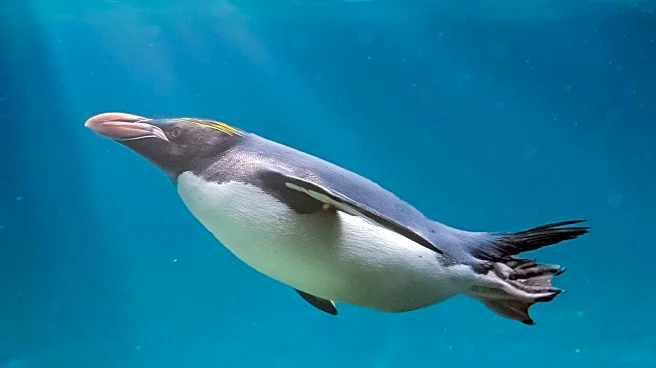What is the story about?
What's Happening?
The Field Museum in Chicago has launched a new exhibit titled 'After the Age of Dinosaurs,' focusing on the Paleocene epoch, which followed the extinction of non-avian dinosaurs 66 million years ago. The exhibit showcases fossils from Colombia, including giant penguins and Titanoboa, the largest snake ever discovered. It highlights the evolutionary changes that occurred during this period, such as the diversification of mammals and flowering plants. The exhibit aims to educate visitors about the significant ecological shifts that laid the foundation for modern ecosystems.
Why It's Important?
The exhibit provides valuable insights into the resilience and adaptability of life following mass extinction events. By understanding the evolutionary processes that occurred during the Paleocene, scientists can draw parallels to current environmental challenges, emphasizing the importance of conservation efforts. The exhibit also serves as an educational tool, engaging the public in discussions about biodiversity and the impact of human activities on ecosystems. It underscores the need for proactive measures to preserve the planet's ecological balance.
What's Next?
The exhibit will be open until 2027, offering visitors an immersive experience with interactive elements and educational programs. The Field Museum plans to continue its research on Paleocene fossils, potentially uncovering new species and insights into post-extinction recovery. The exhibit may inspire collaborations with other institutions to further explore the era's significance and its lessons for contemporary environmental issues.
Beyond the Headlines
The exhibit not only celebrates the resilience of life but also serves as a cautionary tale about the long-term impacts of extinction events. It highlights the slow recovery of ecosystems, urging society to consider the consequences of current environmental degradation. The exhibit's focus on lesser-known species and plants challenges traditional narratives about prehistoric life, encouraging a broader understanding of biodiversity.
AI Generated Content
Do you find this article useful?
















